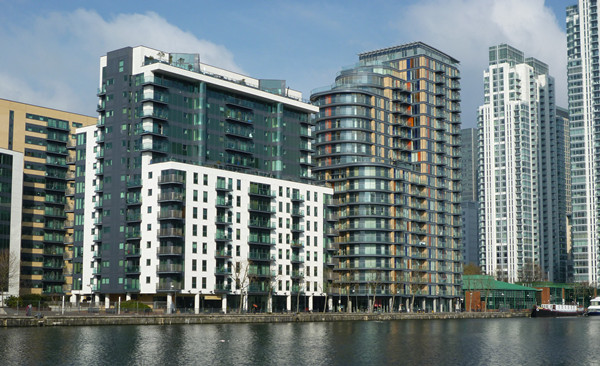“Having recently acted for People’s Daily Online UK Ltd in acquisition of their prestigious offices at 1 Canada Square, Canary Wharf I thought it poignant in this inaugural article to perhaps reflect on a brief history of the area now known as Docklands principally dominated by Canary Wharf.
This relatively small area defined as a loop in the River Thames and east of the City of London is the ‘Isle of Dogs’ and originally known as Stepney Marsh around the 12th century. The earliest reference to the area on a map dated 1588 indicates, as the name infers, that it was the place where King Henry 8th kept his hunting dogs. The oldest surviving building in Docklands today is St Mathias Church built in 1654 as a Chapel for the East India Company an important trading operation in those times. In 1902 the West India Docks were opened by the then Prime Minister Sir Henry Addington and some of the elegant warehouses, listed ‘Grade One’ today, were built prior around 1824/1825. They are mainly in commercial use although a large number have been converted to desirable and spacious dwellings.
The East India Docks was the fore runner and opened in 1806 which was famous for ship building and in particular Brunel’s ‘Great Eastern’ Clipper was launched from the docks in 1859.
This whole area played an important part in the London’s trading business and Canary Wharf to the north of the main docks took its name from the Canary Islands where it used to import produce. In 1851 there were a mere 4,000 residents on the island and this increased to a population of 21,000 in 1901 but with a severe housing shortage. They played an important part during and after both World War 1 & World War 2 and in respect of later the whole area was heavily bombed. These London Docks started to decline in 1967 but even at that time huge warehouses were constructed for the importation of goods from Japan and the far east but alas the Docks were formally closed in 1980.
This area only 3 miles east of the city of London lay fallow for some considerable time but when Margaret Thatcher came into power and elected Prime Minster in 1979 the Isle of Dogs (Docklands) was formally designated an enterprise zone on the 26th April 1982 for a period of 10 years. With this designation came 100% tax breaks for investors and businesses. Commercial property rates on constructed buildings were free of this tax for a 10 year period. This whole area amounting approximately 195 hectares (approximately 470 acres) was carved up into specific areas for industrial, offices, general commerce and business uses.
At this time I was working for an old established company of Chartered Surveyors Henry Butcher & Co. who were given the task of researching companies who would develop the western side of the Millwall Dock. I interviewed some 200 companies in a short period of time but it was thought this avenue was too complicated and too long winded to deal with these entities most of which were not familiar with property development and only a handful of owner occupiers managed to secure sites for their occupation and development. The rest were given over to development companies who were able to provide a range of buildings more quickly so that the attractions of the Enterprise Zone could be used.
This whole area was principally made up of concrete docks and water with poor public transport. In 1987 the Docklands Light Railway (DLR) built by John Mowlem was opened. I was fortunate enough to be invited on the inaugural run but only a few days prior to that, on a visit to the area, the second carriage of which there were only two completely overshot the terminus and was suspended in mid air at Island Gardens. This left me feeling a little anxious having the complimentary ticket in ones pocket!
The London Dockland Development Corporation (LDDC) was originally set up in 1981 to facilitate the development of this area and attract new investments. I myself on a number of occasion was given two helicopters and a Thames Sailing barge for hospitality purposes with a view to inviting property investors, industrialists etc. for a trip of the area. At that time we used to hover at 850 ft above where Canary Wharf is today as plans were already a foot to develop this 70 acre site with trophy buildings. In July 1987 Olympia & York controlled by the Reichman brothers from Canada signed a Master Building Agreement to develop this site. Phase One at Canary Wharf was planned as 418,000 m? effectively 4.5 million square feet of offices with adjacent hotel and housing at Canary Wharf Riverside. This is where Peoples Daily Online UK Ltd now operate from.
The whole area over recent years has gone through turbulent times with recessions in the 1990’s and more recently from around 2007. You may recall that in February 1996 a IRA bomb exploded at South Quay damaging more than 1 million square feet of offices and nearby houses.
In term of overall investment, land prices when I was charged with disposing of the area at Millwall Dock, Millharbour, were ?100,000 per acre on a 200 year lease at a peppercorn rent with one third paid as a deposit and the remaining two thirds payable on completion of the developed scheme! Something similar is probably needed today in more recent enterprise zones but unlikely!! Clearly times have changed and these prices are historic, if not almost pre-historic, but at the time a these initial businesses were regarded as pioneers for the area. To compare, a smallish site housing a long established public house was sold around 2007 for about ?25 million pounds!
Over the past 30 years the whole area of Docklands is now an established financial centre as well as home to businesses and residents alike in the numerous tower blocks that have been constructed. Notwithstanding the current economic climate there is still major developments under-construction at present as it is London that will be in the fore front of recovery. There remains plenty of scope and opportunity for investment in this area and is effectively the entrance to the vast Thames Gateway scheduled for development over the next coming decades”
 |

 分享到人人
分享到人人 分享到QQ空间
分享到QQ空间












